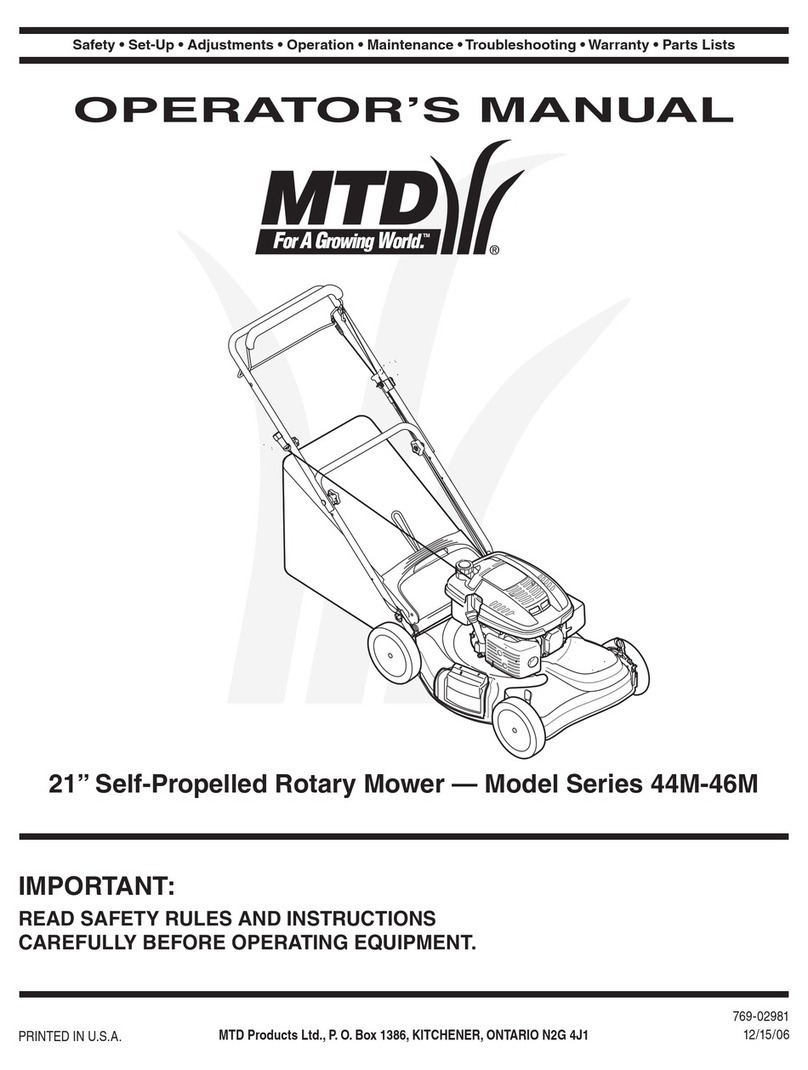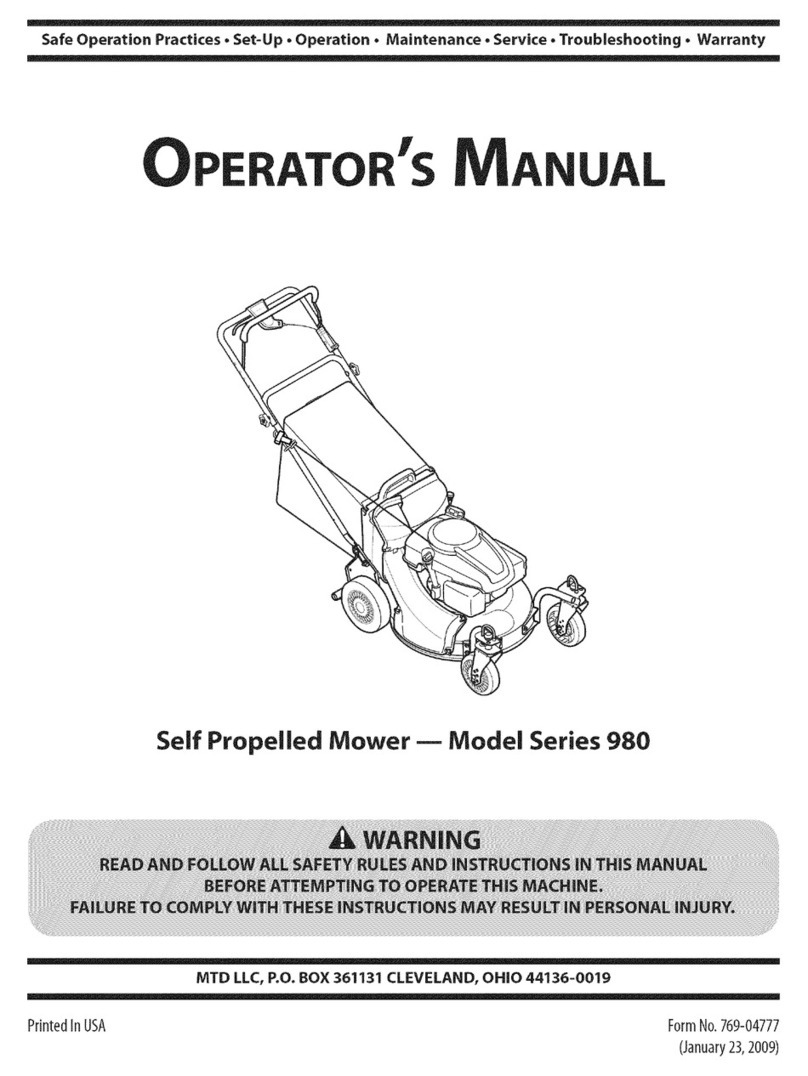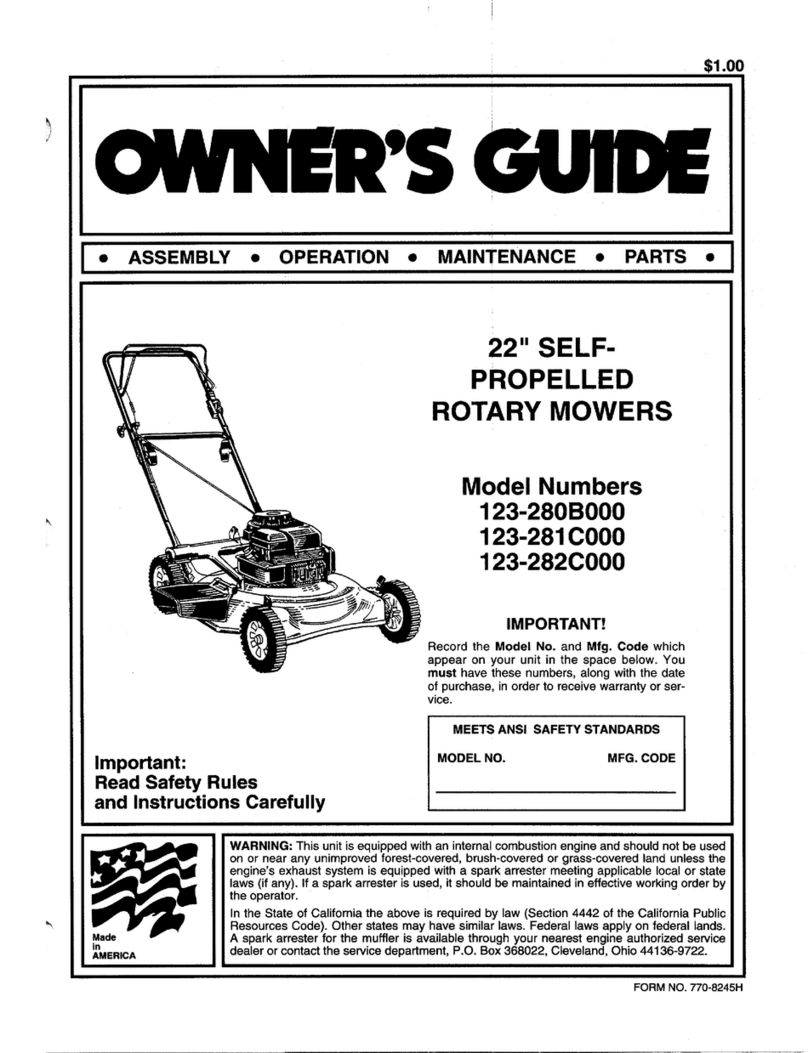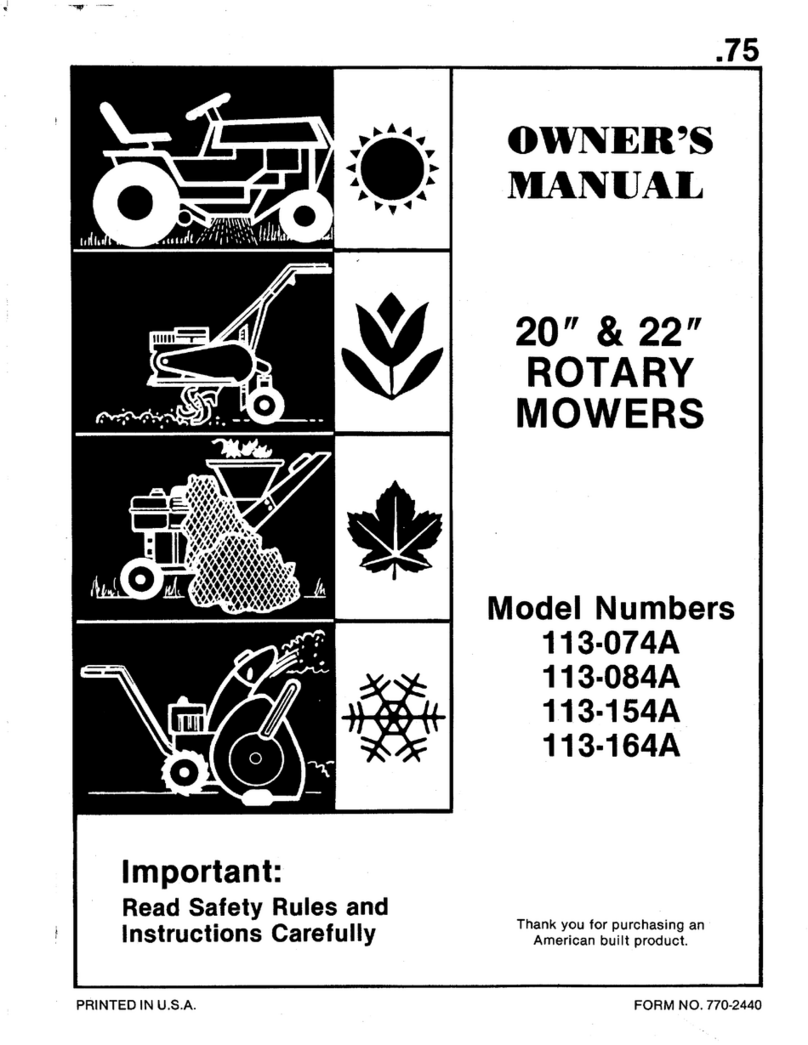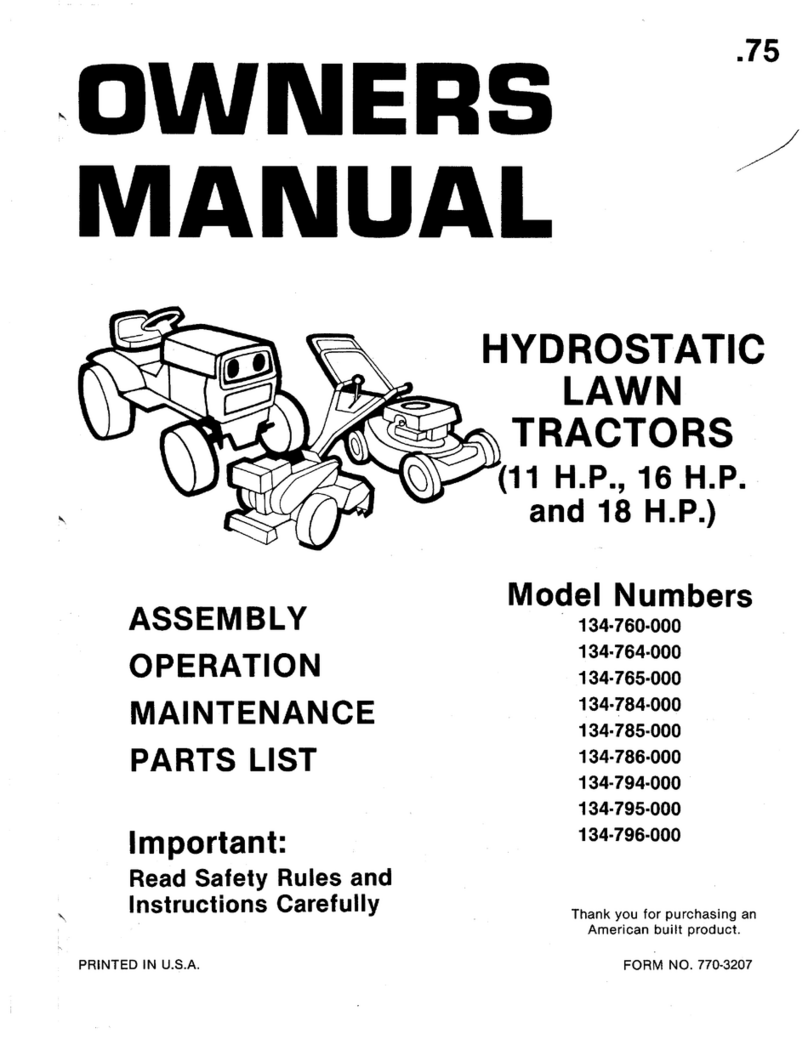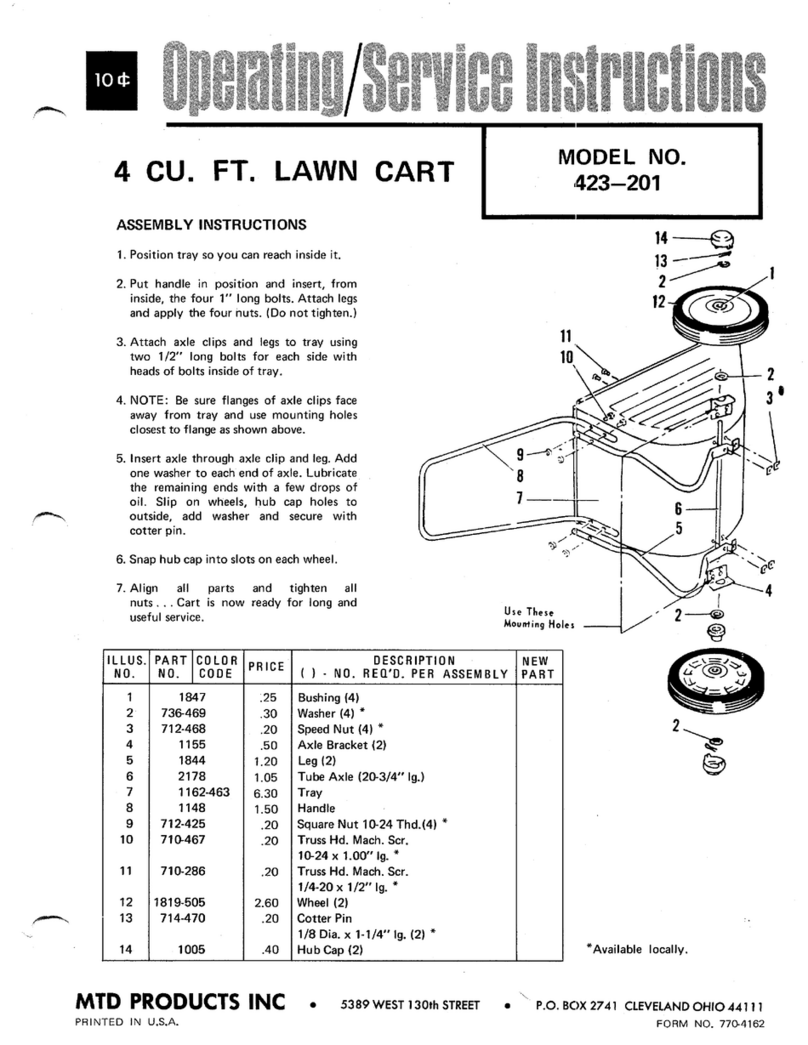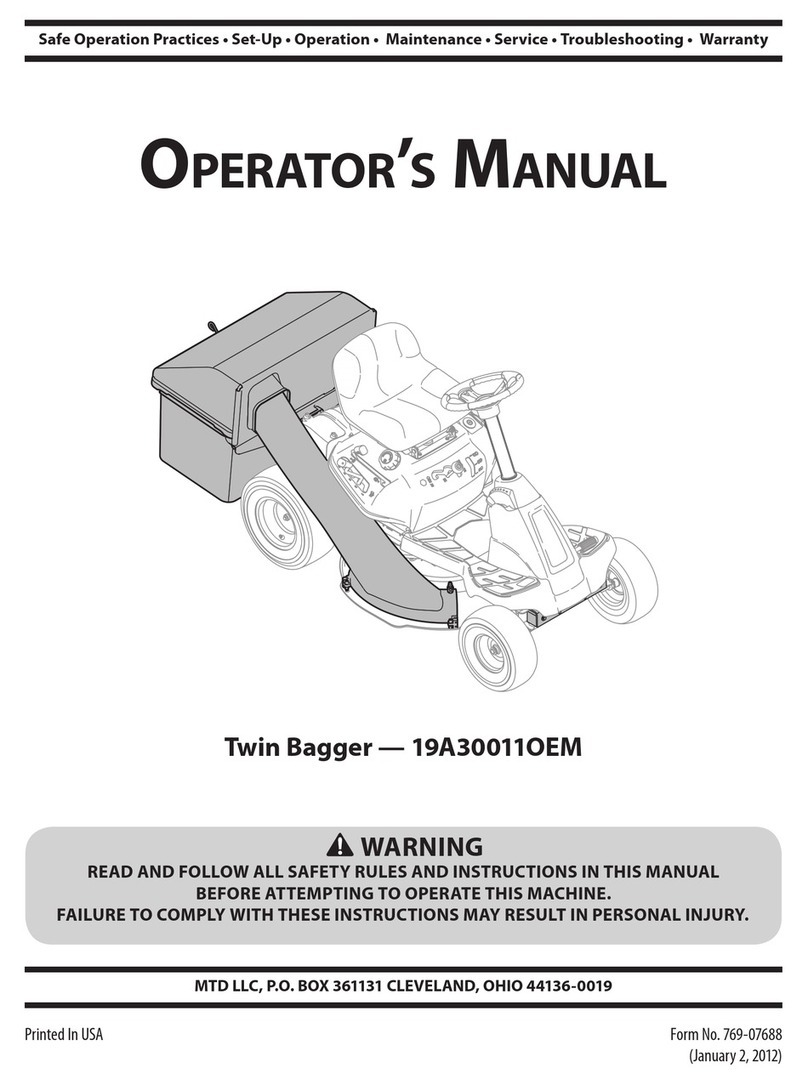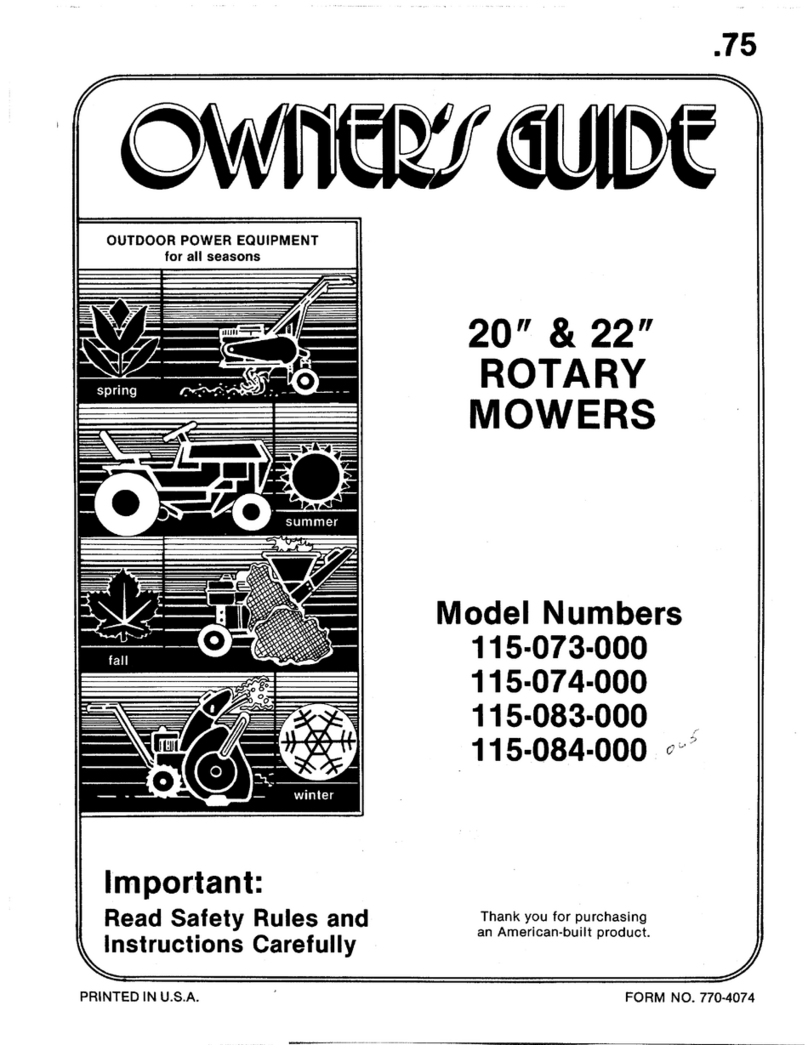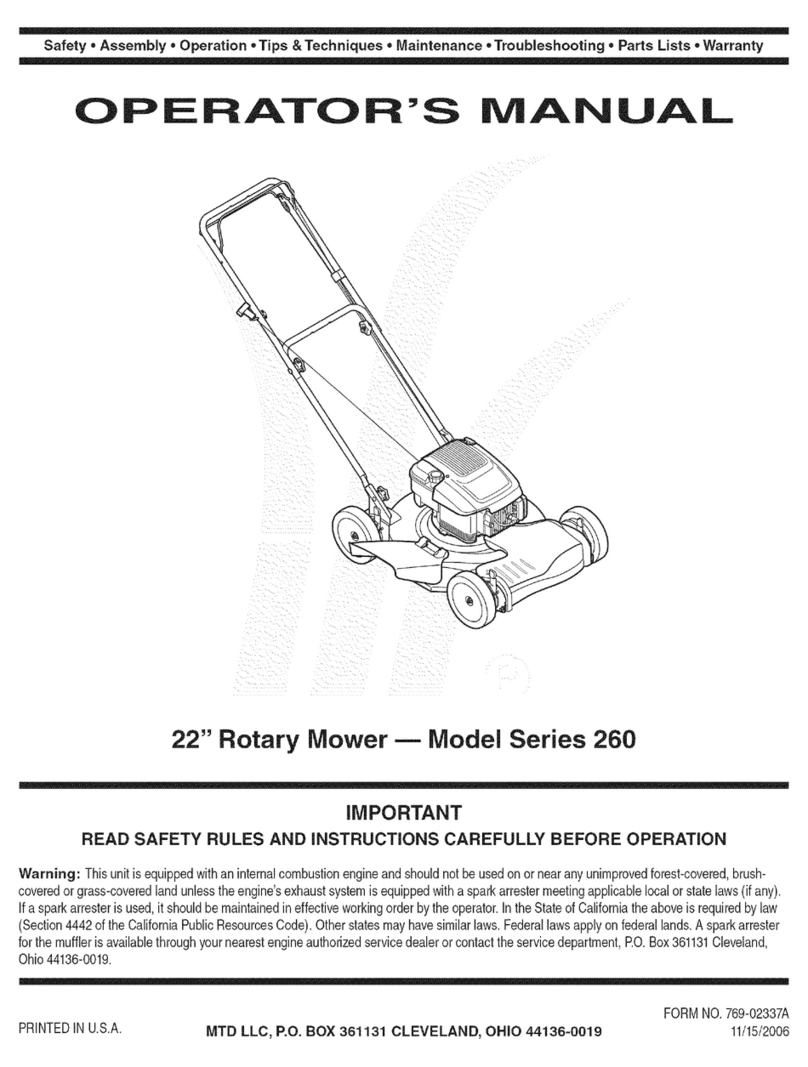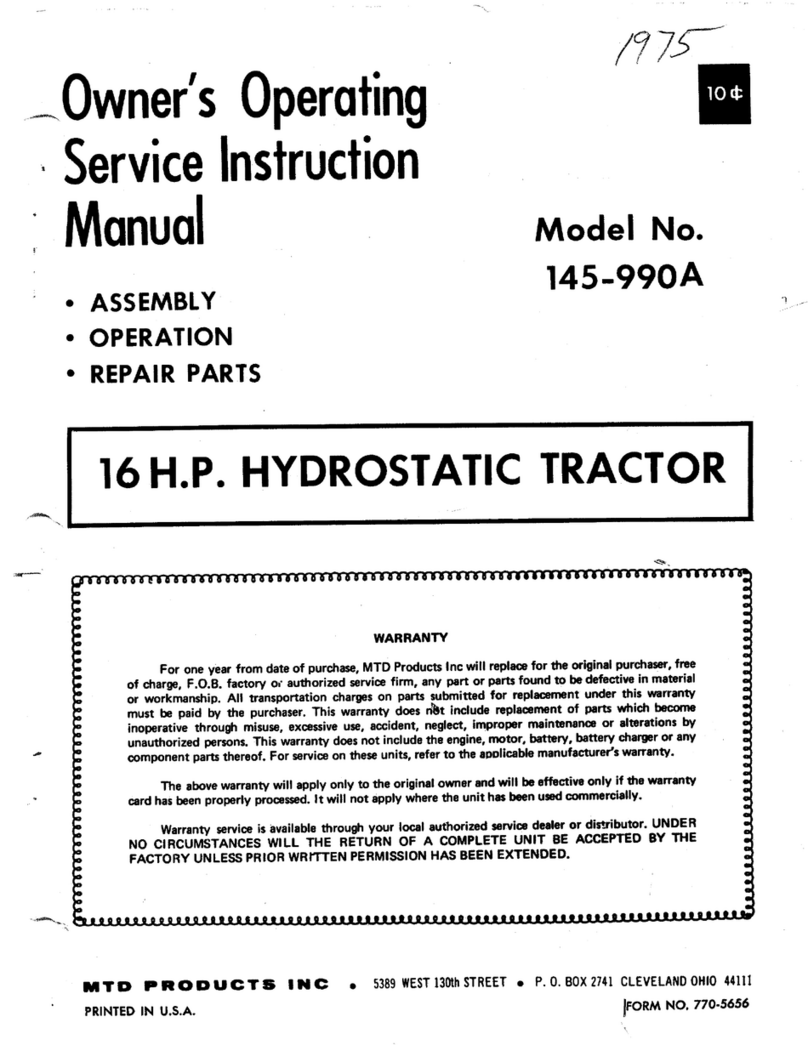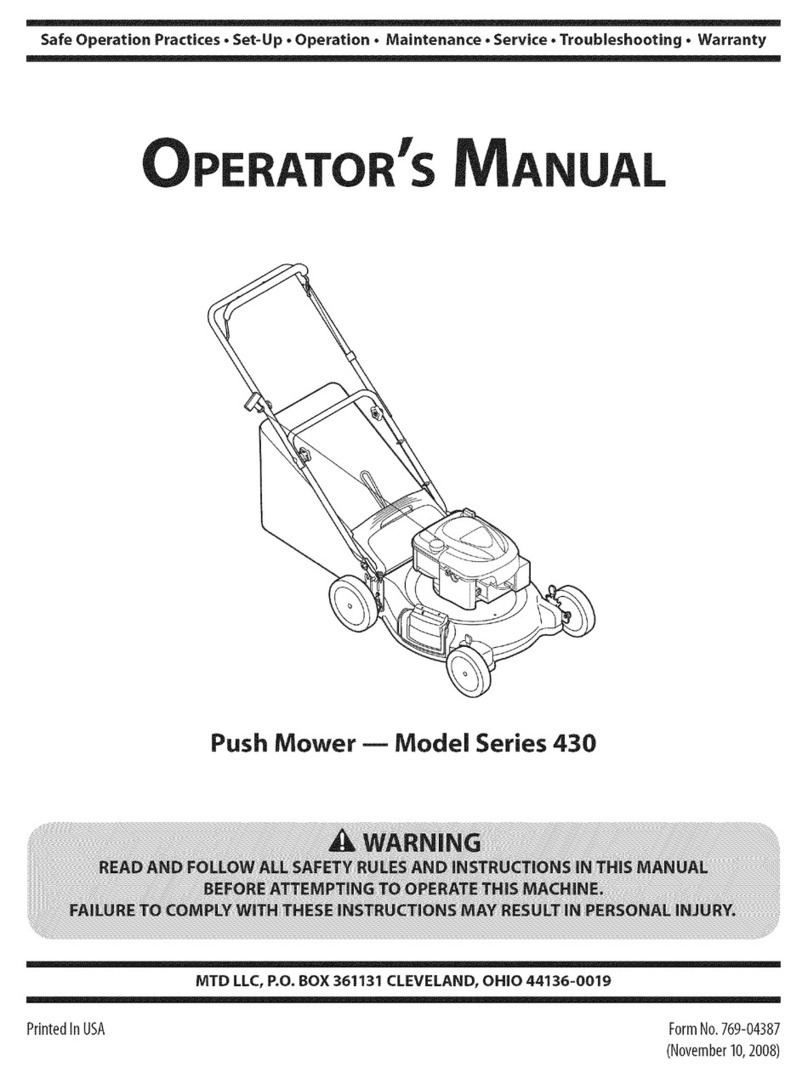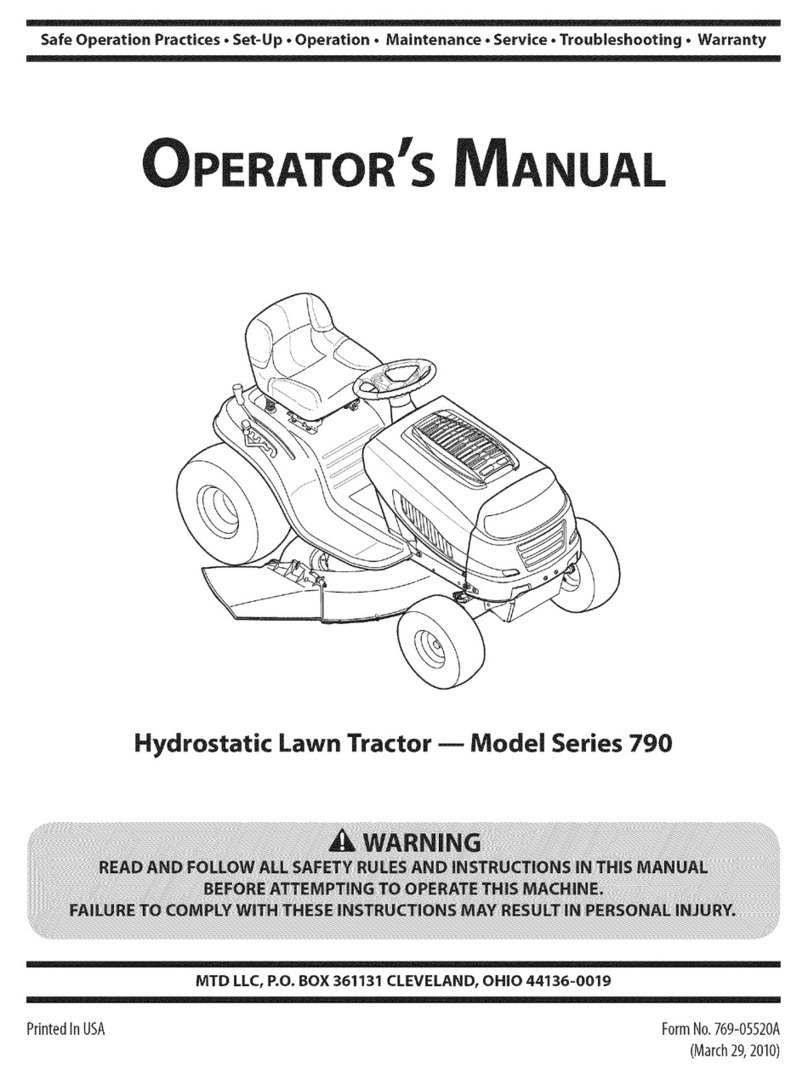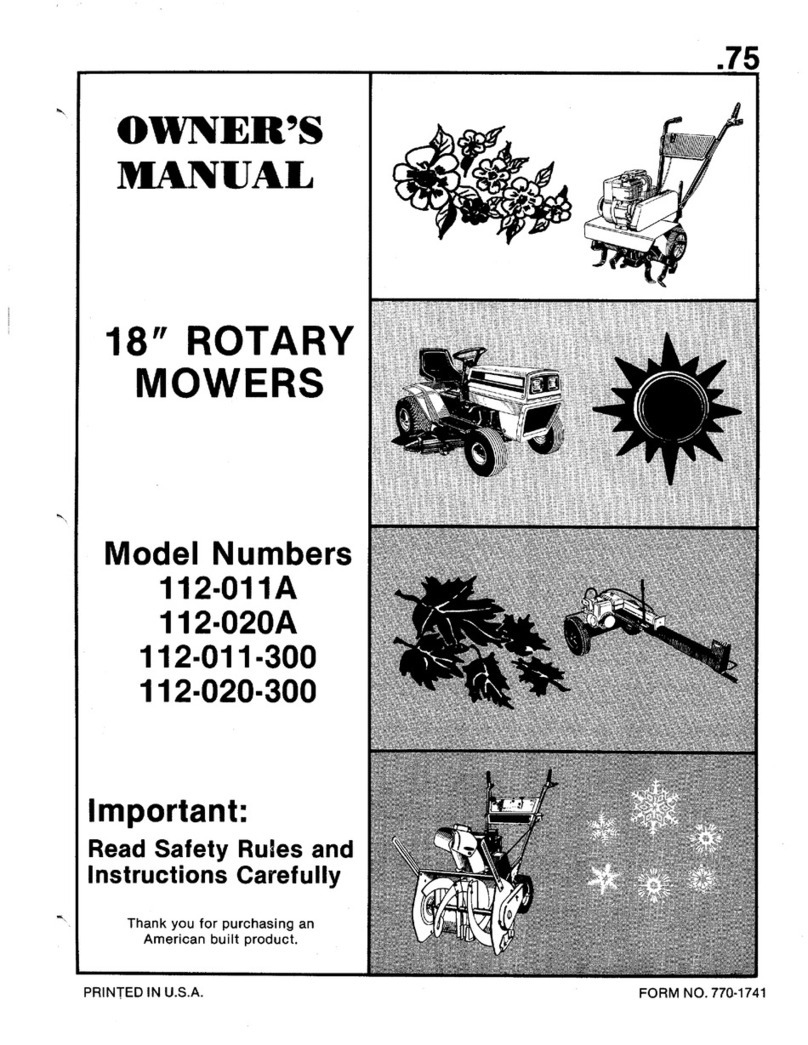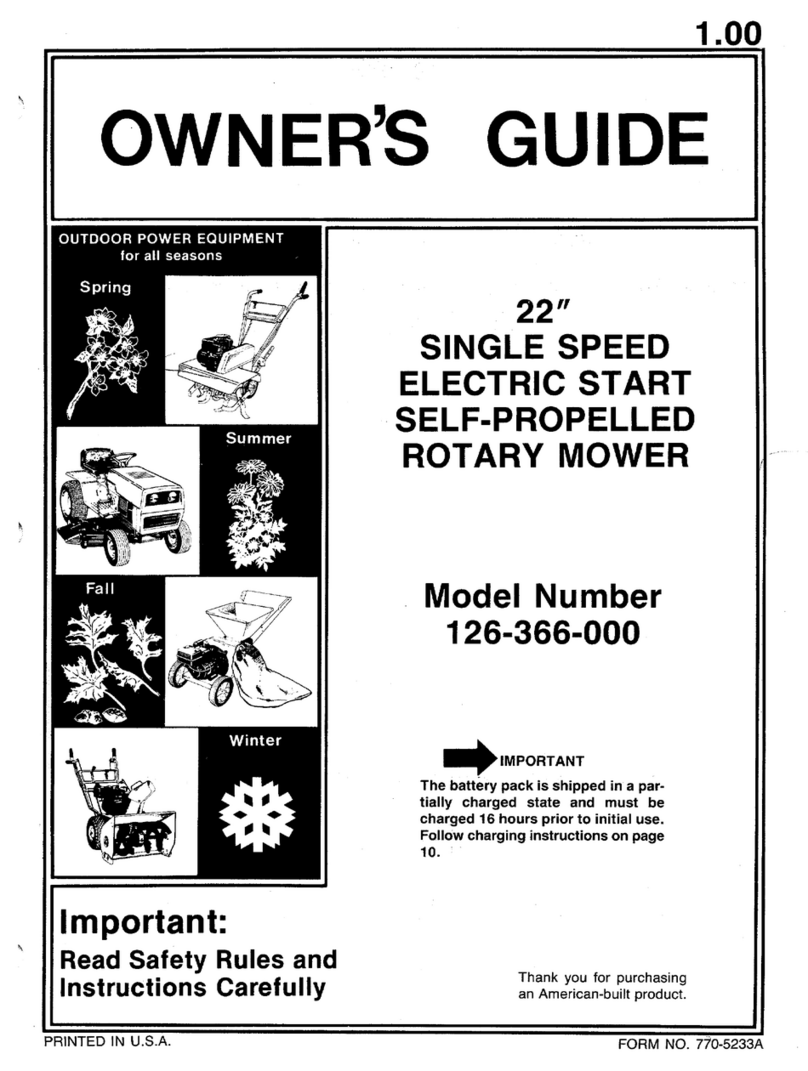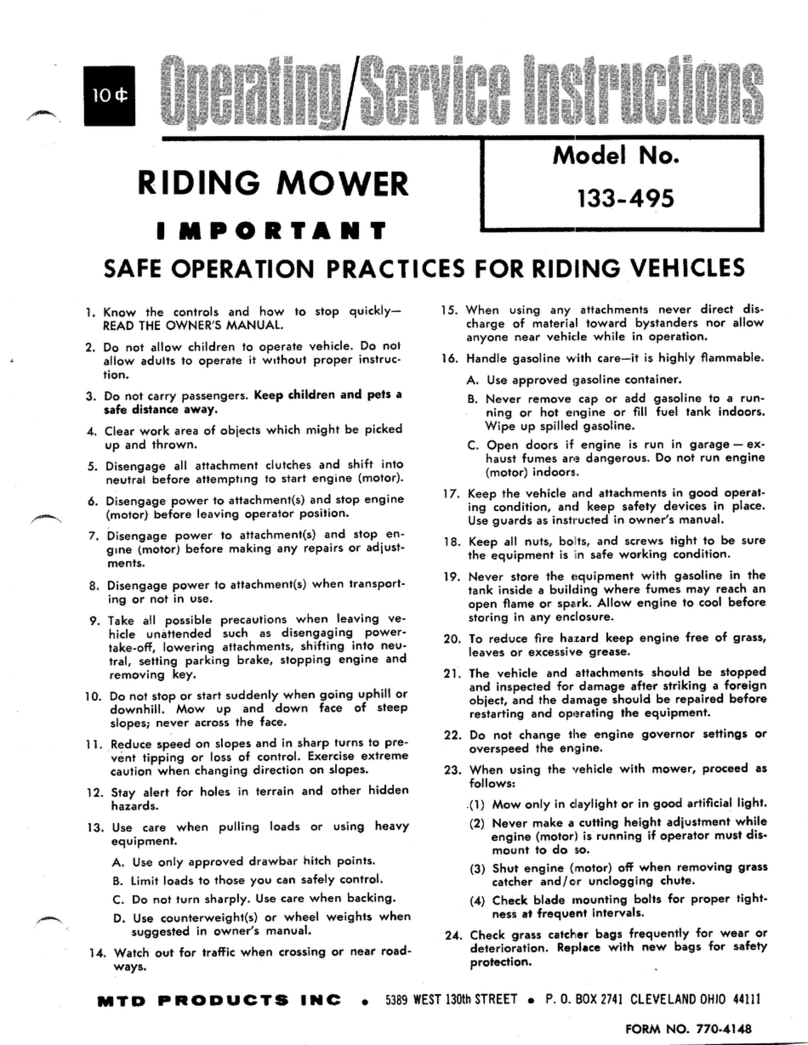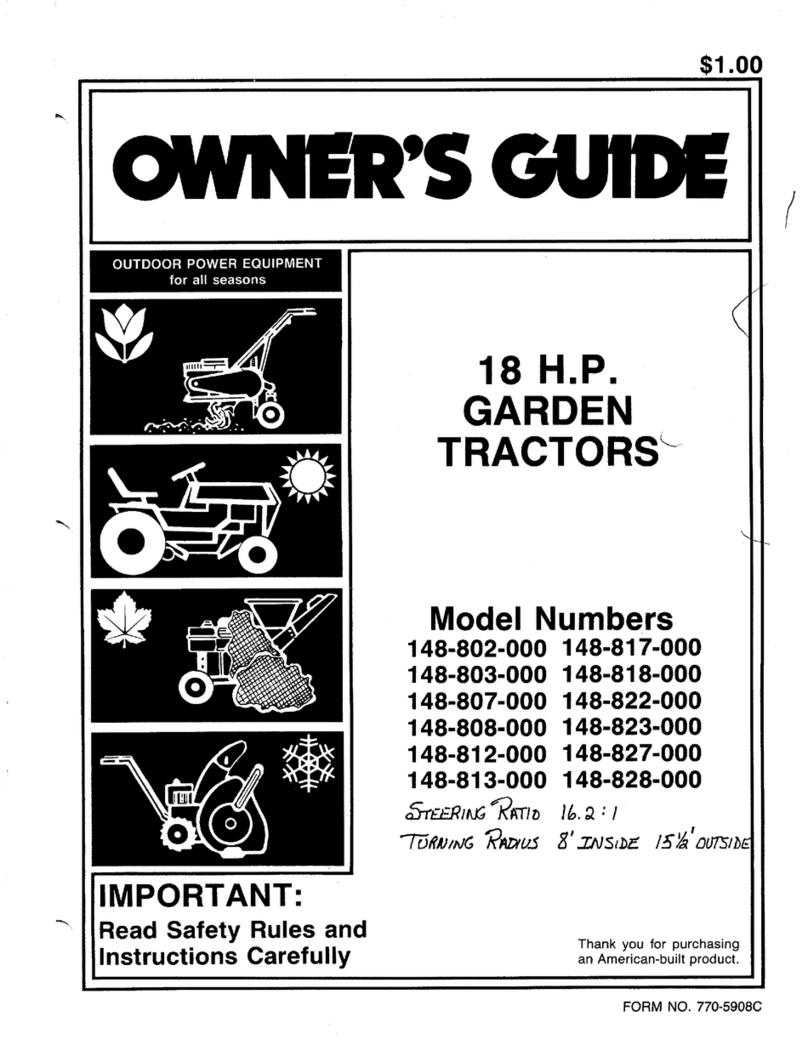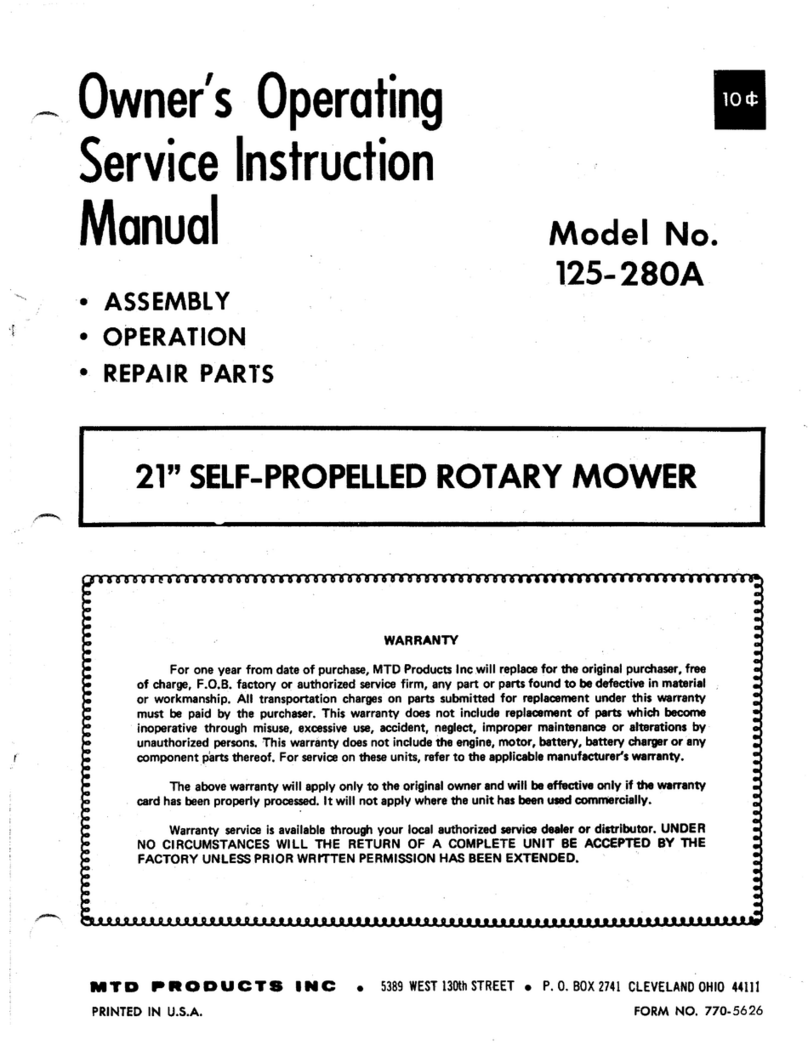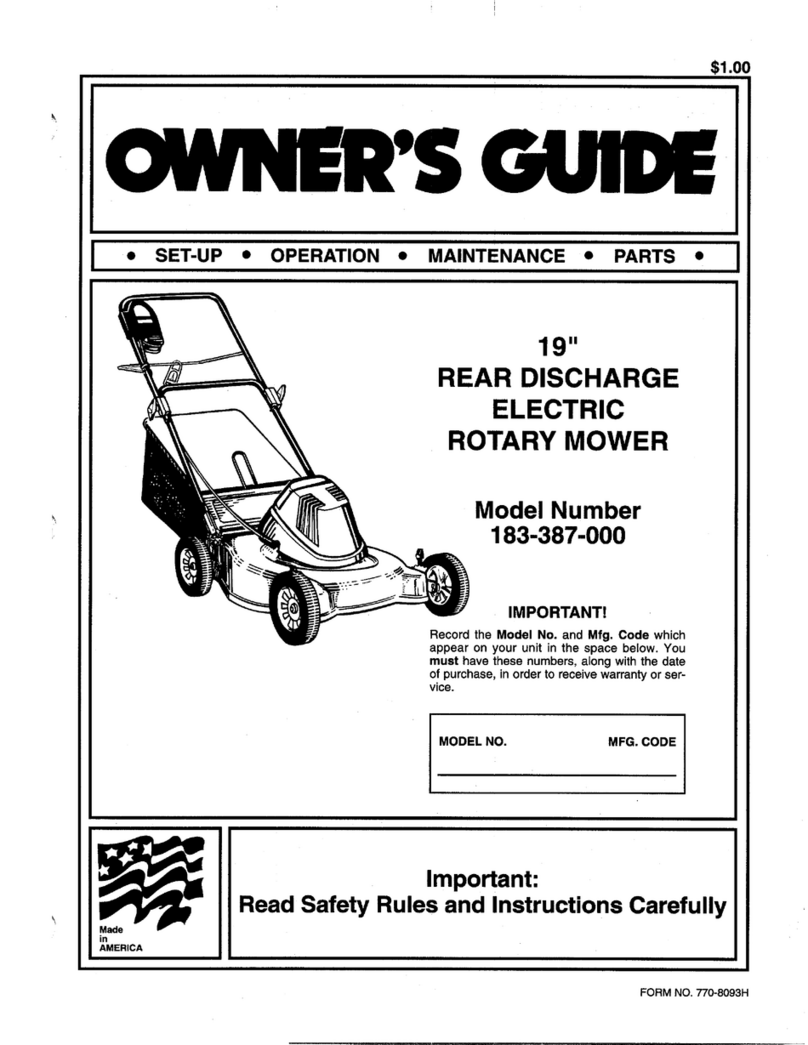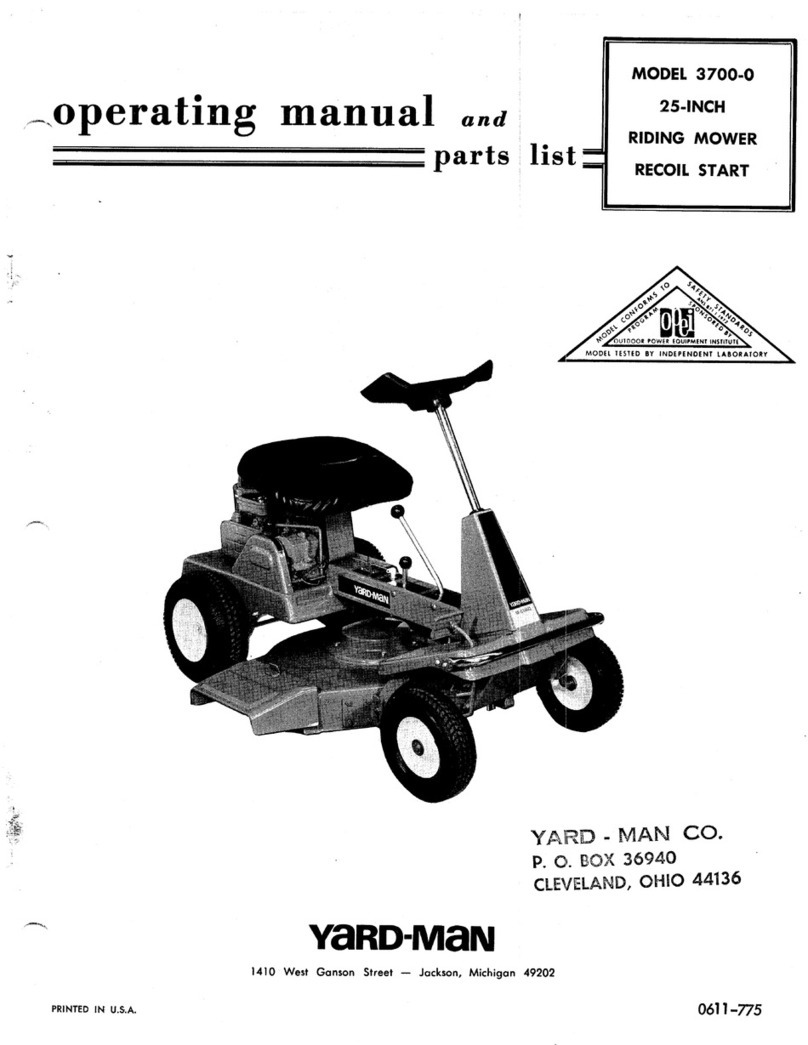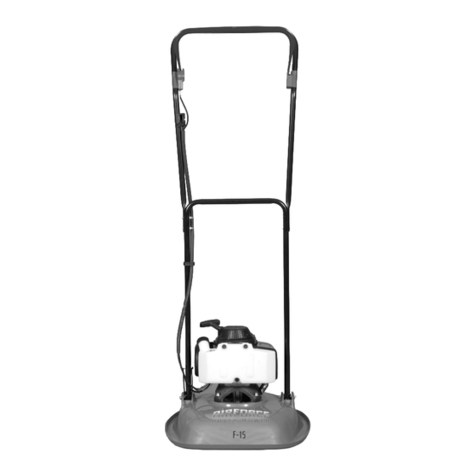
10
oil through the fill tube using a funnel to bring it up to the
top of the operating range.
Note:Gasoline Engine: Use SAE 10W30 or SAE 10W40 engine oil, rated for ser-
vice SJ.
c. Hydraulic Oil: (Filled at the factory before shipment.) The
hydraulic oil tank is located beneath the operator’s seat.
Always wipe off the area around the oil tank fill neck before
checking the oil level to prevent dirt from contaminating the
oil. Remove the cap and make sure the oil level is up to the
lowest hole on the oil tank fill neck. The top hole is for vent-
ing. If the oil level is low, fill with a good grade of SAE20W-
50 oil.
d. Tires: 10 psi Rear, 30 psi Front Caster Tires
Note:New tires are overinflated in order to properly seat the bead to the rim. The
normal working pressure for the traction tires is 8-10 psi. The front caster wheels
should be inflated to 30 psi.
2. Check that all Nuts, Bolts and Screws are Tight.
3. Check the tension of the deck drive belts.
a. Remove the deck cover
b. The tension of the deck drive belts are maintained by a
spring mechanism that adjusts for wear and stretch.
c. Examine the belts for cuts, fraying, and excessive wear.
Replace if any of these are detected.
d. Replace the deck cover.
4.
Adjust the Mowing Deck:
The cutting height is set anywhere in
the range of 1-1/2" to 5-1/2". You may need to adjust the mowing
deck to achieve the proper angle for mowing. Follow the proce-
dures below to set the appropriate angle to the mowing deck.
a. Park the mower on a flat paved surface, engage the parking
brake, shut off the engine, remove the key from the ignition
switch, remove connection of the spark plugs and using the
transport lever, lower the mowing deck into the cutting posi-
tion.
b. Using a ruler, pencil and paper, measure and note the dis-
tance from the paved surface to the bottom edge of the
mowing blade at the front and the back of the deck on each
side of the mower. (Four dimensions.)
Note:The front edge of the mowing deck should be 1/8"-1/4" below the rear edge
of the deck so that the blades are cutting grass in only the front half of their circular
path. This decreases friction and reduces the drive power required.
01004029 Rev 99_2.fm Page 10 Monday, September 27, 1999 8:23 AM







